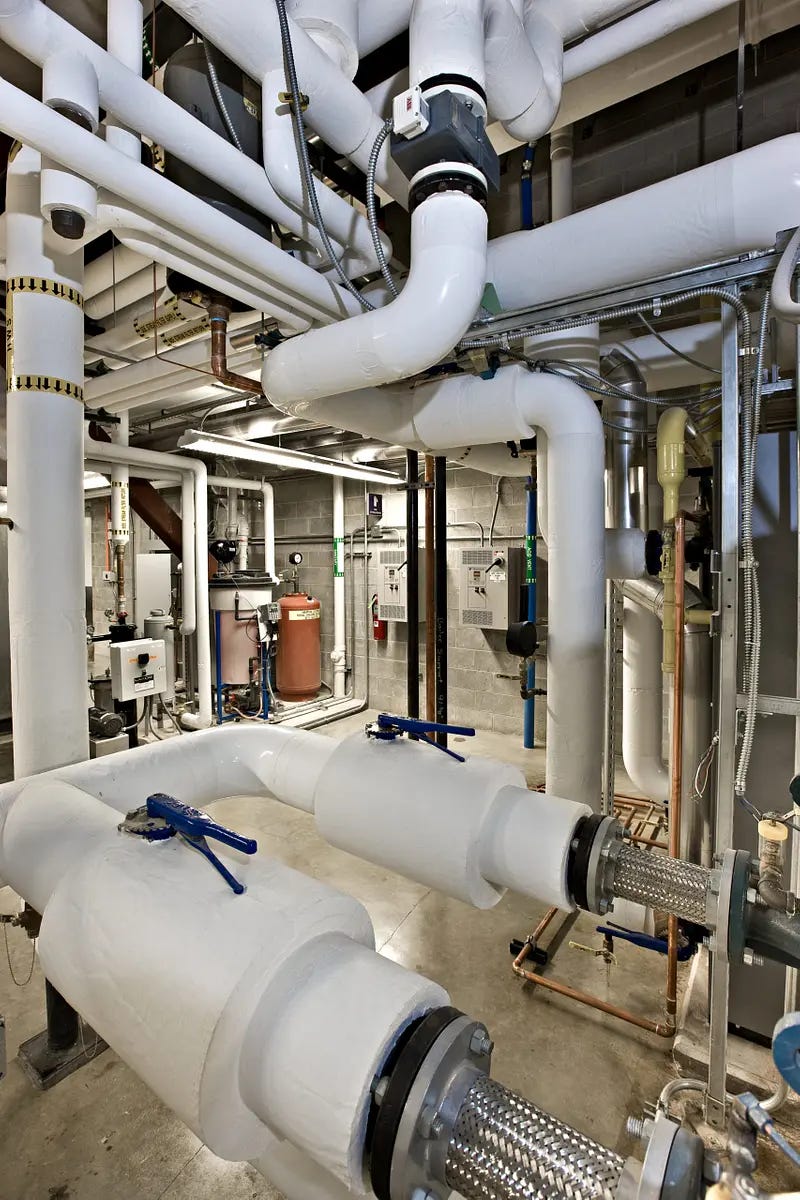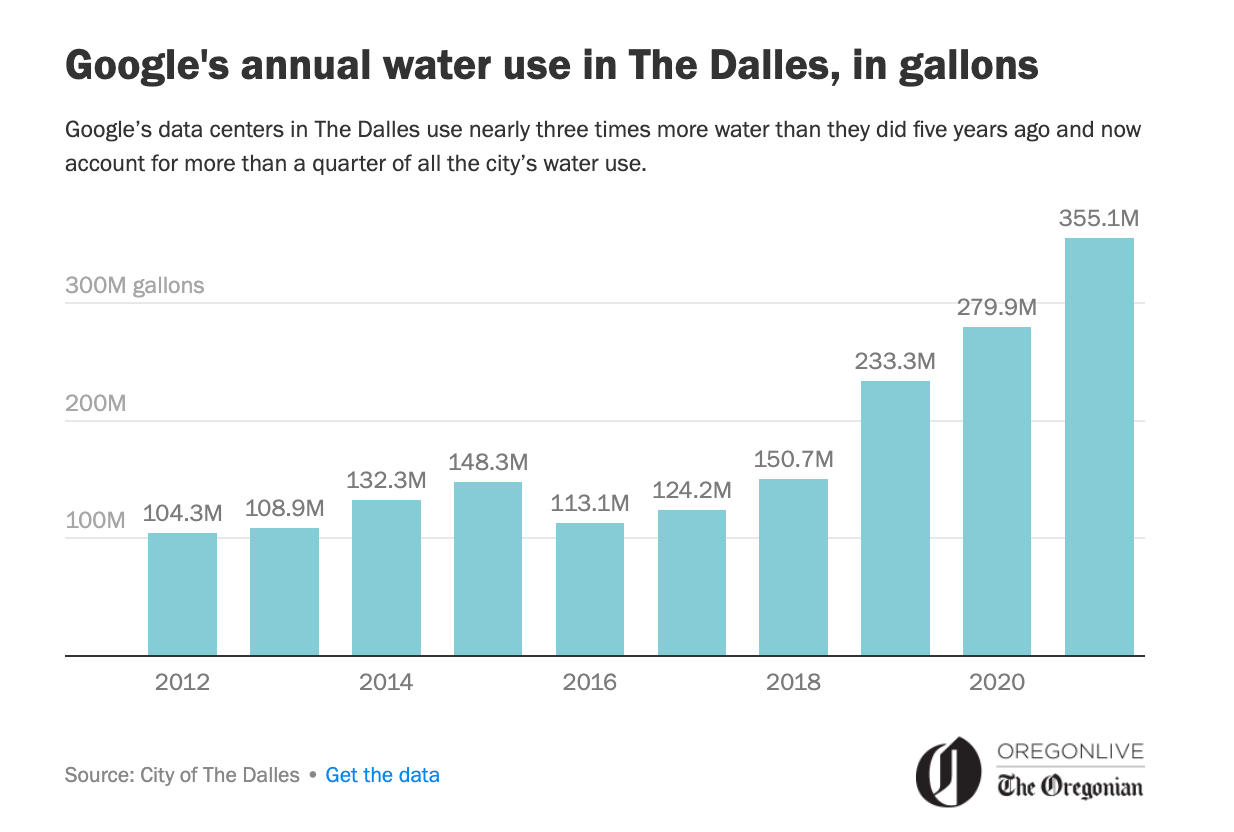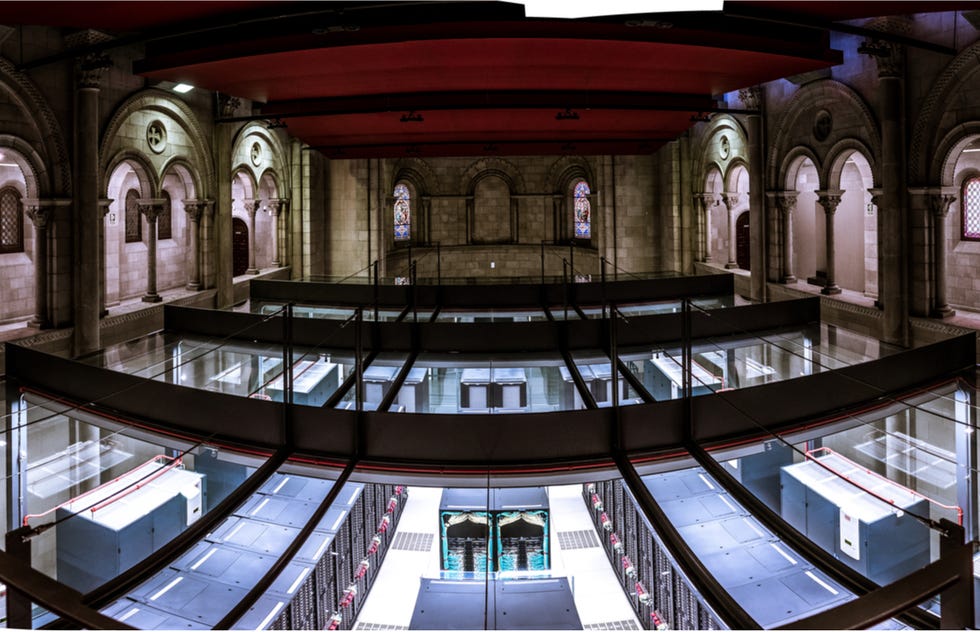Dear Readers,
As the year 2022 comes to a close, I want to express my gratitude to all of my subscribers for their support of my S.A.D newsletter. I hope you have found my articles useful in some way. While I didn't always stick to a weekly schedule (life can be unpredictable!), I plan to be more regular in my writing in the coming months. I hope you all had the opportunity and privilege to unplug, unwind, reflect and maybe enjoy a bit of a Dead Week.
Instead of a year in review, I wanted to share a short piece about data centres and the related natural resources, such as water and land, that are associated with their physical infrastructure.
Data centres are facilities that contain the servers and other equipment necessary to support various digital infrastructures. Servers are specialised computers that can store a wide range of information, including your social media posts, vacation photos, and financial transactions. In order to operate these servers, you need an operating system, other software, and network cables among other things. The servers are typically stored in racks to organise and maximise space. Additionally, data centres require power supplies and cooling systems, which often use water —- lots of water.
In the early days, big companies, governments, and universities maintained their data centres. When I started working as a student and then full time, I spent hours in different data centres installing things (we used to call them “server rooms” then). These rooms were cold and noisy. And I remember unboxing several servers on certain days, arranging cables, putting up the servers in the racks etc. Later (from 2012-2016), when I worked with the Blue Waters supercomputer at NCSA, Illinois. I still visited those facilities — not as frequently as before as we were able to do most of the maintenance and installation remotely. Starting 2006 and onwards, some of the these server rooms were consolidated into big data centres or moved to the cloud. Instead of “bare metal”, servers were offered as a service by AWS or Google. Instead of unboxing or arranging cables, you get a server with the click of a button (of course, some poor sys admin still needs to unpack these servers somewhere). You may compare these server provisioning services to a utility provider such as water or electricity but with less oversight and regulations.

The issue of data centre energy and water consumption has been a topic of concern for some time. However, in recent months, the COVID-19 pandemic, climate crisis, and Ukraine war have brought renewed focus on the environmental impact of these facilities. In December 2022, The Oregonian published an investigative report on Google's data centre in Dalles, Oregon. Additional coverage of this issue can be found here and here:
Google built its first data center in The Dalles in 2005. It has received tax breaks worth at least $260 million since then. The company has also become an important component of the local economy, with about 200 employees. Its original data center went onto the tax rolls last year after its property tax exemptions expired, generating more than $5 million in local taxes.

And this is not just about making a deal with the city and getting tax breaks — Google found different ways to protect its interests. Some of this information was not made public during the construction phase, but thanks to investigative journalism by The Oregonian, taxpayers are now aware of these details:
City attorneys claimed Google’s water use was a “trade secret,” exempt from disclosure under Oregon law, and sued The Oregonian/OregonLive to block the release of the information. Google paid more than $100,000 to fund The Dalles’ legal fight to maintain that secrecy over the past year.
There are similar cases around land usage as well. A very good example is high frequency trading firms. As within milliseconds millions of stocks can be bought or sold electronically the physical distance from the trading firm to the stock exchange matters. Some of these high frequency trading firms installed their own dedicated fibre optic path that went from Chicago’s South Loop to a Nasdaq server in New Jersey (through rural roads in Ohio and Indiana). As there are limits of physics for these physical cables, these firms moved to install their microwave towers using old army bases. These are dedicated infrastructures often go through public roads for ensuring millions can be made within milliseconds. See Michael Lewis’s Flash Boys for more details.
There are also trends to move these data centres to different Nordic countries. In one interesting case where the heat generated from the data centres (owned by Russian company Yandex) was used to warm up a small town in Finland. As you can imagine, data centre installation is not just about data centres anymore — there are global politics involved.
A point I try to make in this newsletter is just because something is “digital”, we should not forget the physical structure and systems behind it (I talked about Analog 2.0 and materiality before). These structures are often based on existing power relations and infrastructures either driven by the government or commercial entities. It takes effort for the general public to be part of this discussion and make an impact.
Scholars have been studying technology (long before the internet and digital) to understand these issues beyond the utilitarian aspect of technology — to claim that technology is not neutral. Even technological objects as artefacts are political objects themselves — it is not enough to say technology works within a socio-technical space we need to “attend more closely to technical objects themselves” — see Langdon Winner’s article “Do Artifacts Have Politics?”. A short excerpt here:
My belief that we ought to attend more closely to technical objects themselves is not to say that we can ignore the contexts in which those objects arc situated. A ship at sea may well require a single captain and obedient crew. But a ship out of service, parked at the dock, needs only a caretaker. To understand which technologies and which contexts are important to us, and why, is an enterprise that must involve both the study of specific technical systems and their history as well as a thorough grasp of the concepts and controversies of political theory. In our times people are often willing to make drastic changes in the way they live to accord with technological innovation at the same time they would resist similar kinds of changes justified on political grounds. If for no other reason than that, it is important for us to achieve a clearer view of these matters than has been our habit so far.
I think we are yet to find this framework for a clearer view that can make an impact. These academic discussions are often obtuse and abstract enough that they stay within a certain circle without much wider impact. On the other side, the industry and media strive to push the agenda of technology hype be it electric cars or robots.
Now, don’t get me wrong. I am all for building sustainable data centres so we can use these digital technologies. It is very easy to critique and be the bearer of doom and gloom. We need to accept that these infrastructures like data centres are needed to run our current society — either to process climate change scenarios or store cat pictures. However, we do need to find ways to understand that these decisions such as using water to cool thousands and thousands of servers have implications.

Happy New Year!




